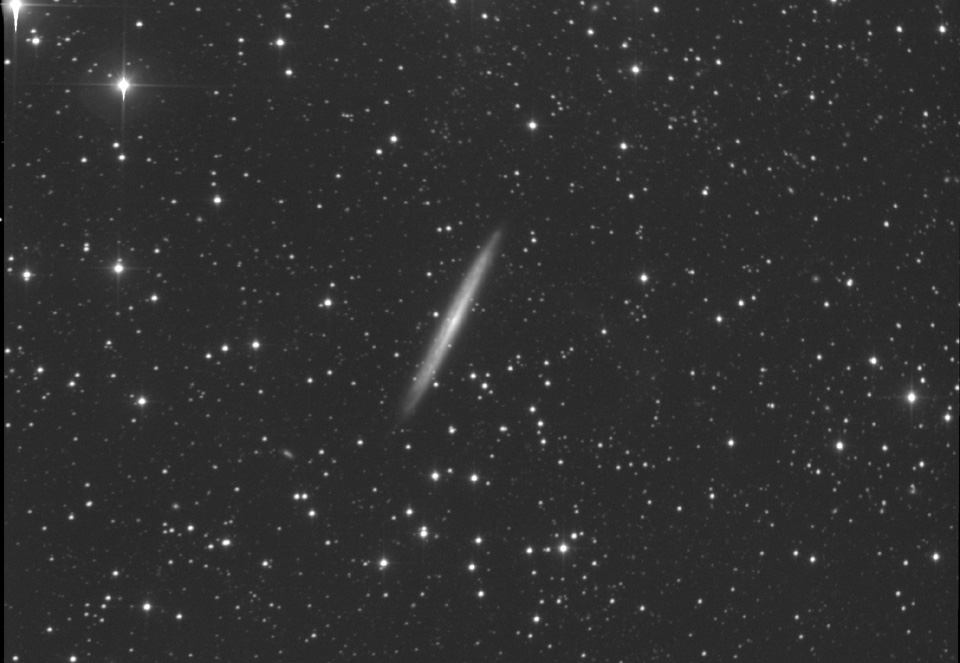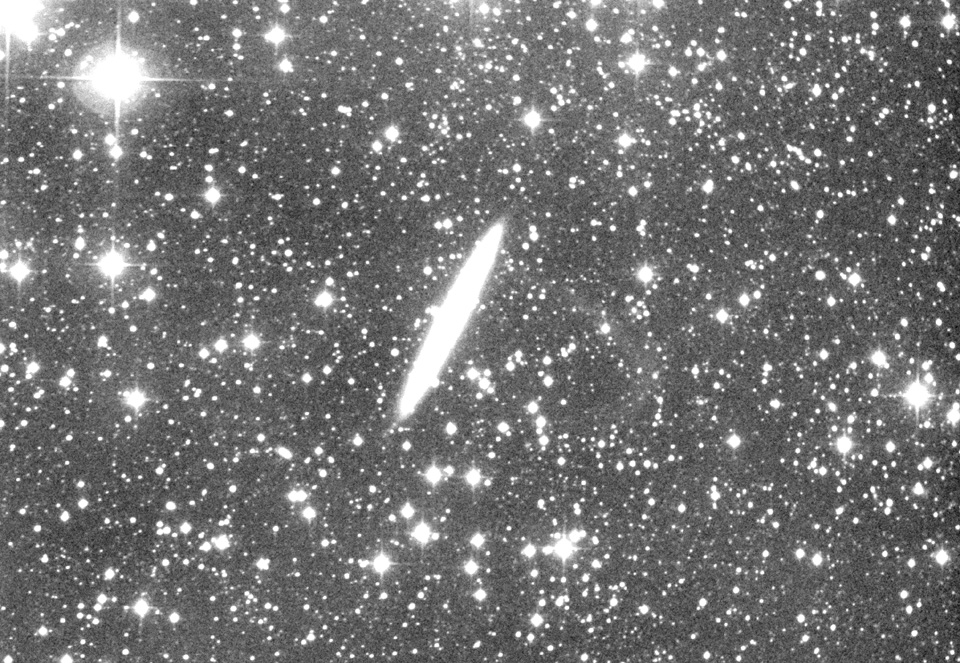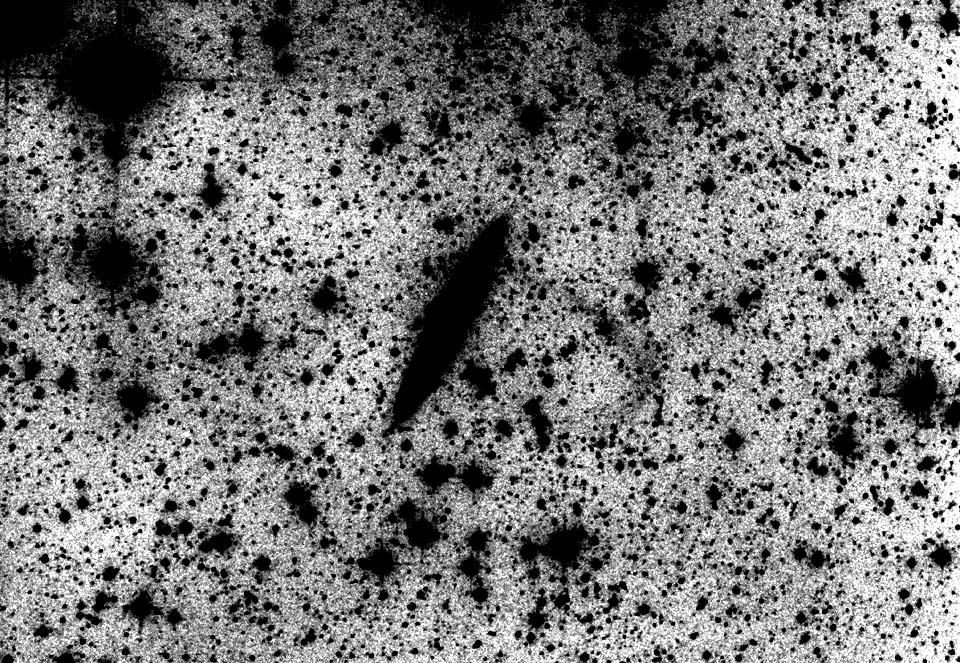Deep Broadband Imaging |
On 2008 June 19, Astronomy Picture of the Day showed a fascinating image of a small galaxy getting ripped to shreds (see http://apod.nasa.gov/apod/ap080619.html), its stars strung as gigantic streams of stars around the nearly edge-on galaxy NGC 5907. APOD's image was shot by R. Jay GeBany with a 20-inch f/8.3 telescope with a total exposure time of 11.35 hours. In their paper, the professional authors state: "Regardless, this result is a striking example of the scientific potential of modest aperture telescopes (0.5-meter) operating under very dark skies for probing the diffuse structure of galaxies." This caused me to wonder just how small a telescope would really be required to detect extended faint structures in broadband. The answer is that an 8-inch (0.2-meter) telescope operating under not-so-great semi-rural skies (about 20.5 mags per square arc-second in V) was able to detect the main tidal stream around NGC 5907 in 2 hours of exposure time. The images presented below are the result of two nights imaging, for a total of 4.4 hours exposure time. The telescope used is a Vixen R200SS 200mm f/4 Newtonian reflector with a Paracorr coma corrector; the imager was a 3.2 megapixel Quantum Scientific Instruments 532ws CCD camera. A total of 80 exposures of 200 seconds each were combined to make the image below, shown in three different versions. |
|
The image is log-scaled. The nucleus appears a small white point of light, with a prominent dust lane visible and passing partially before it. The ends of the disk appear slightly warped. The image below is a much more aggressive stretch.... |
|
The tidal stream is now clearly visible to the right of the over-exposed image of the galactic spindle. GaBany's image is far superior. The tidal stream covers fewer than 10% the number of pixels as the image by GaBany and received only one-third the total exposure time, so the resolution and detection floor in the image above simply cannot compare, but the tidal stream is clearly present. |
|
Finally, this negative image has been stretched to the limit. Faint traces of the tidal stream may appear to the left of the galaxy. It would be interesting to a deeper exposure next year when NGC 5907 is well placed for imaging. My guess is that somewhere around 16 hours of total exposure on nights carefully selected to be darker and clearer than normal would suffice to show the tidal streams in their full glory. |


